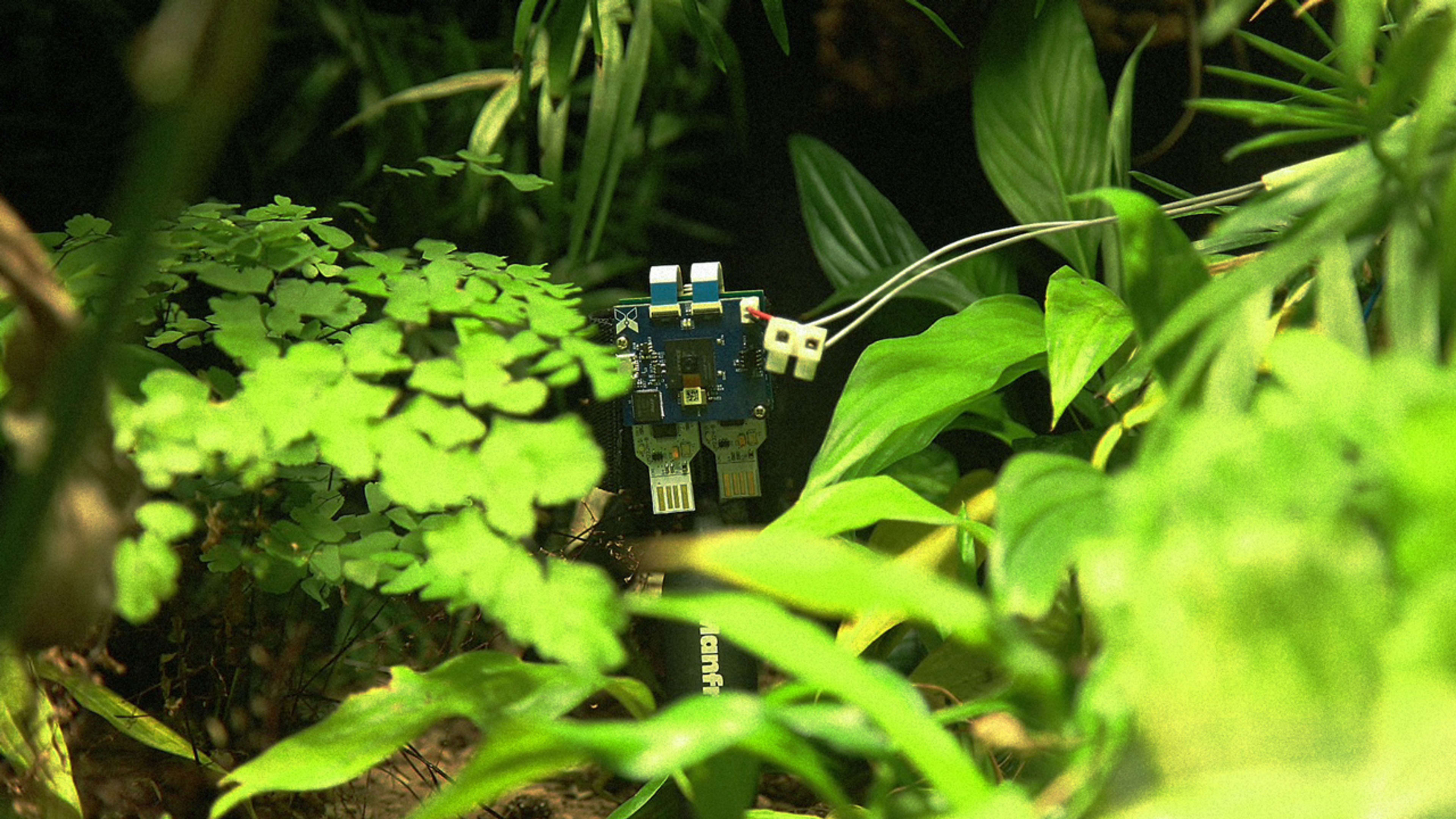Pete is not your run-of-the-mill fern. The plant can do something most often associated with people who post on Instagram—it can take selfies.
To be clear, Pete’s selfie-capturing isn’t a case of plants gaining consciousness and developing vanity. It’s part of a collaborative effort between the Zoological Society of London and Xnor, an artificial intelligence company that seeks to create energy efficient ways to power AI.

That’s because Xnor had already created solar-powered AI. “We wanted to move the boundary to the next level. What’s after solar?” says Xnor cofounder Ali Farhadi. The answer was plants. Plants release biomatter as they grow. When bacteria breaks down that biomatter, the process generates energy, but very small amounts of it: just microamps of current and hundreds of millivolts, but that was all Xnor needed to be able to “turn on a camera, take a picture, even run AI on it,” Farhadi says.
How exactly does this work? The voltage levels that the fern produces “are not sufficient to run even a smaller microcontroller,” says Saman Naderiparizi, head of hardware engineering at Xnor. In order to make the plant-produced energy useful, Xnor had to increase the voltage by a few volts and accumulate charge on an energy reservoir—a capacitor. While the capacitor accumulates energy, the AI module is in sleep mode, consuming a negligible amount of energy. When the energy accumulated is sufficient, however, the AI inference module is activated.

Once Xnor’s system runs, Pete’s selfie is captured, the AI model (pretrained to recognize the plant) runs, and the image gets stored on a Flash memory. Those images can be downloaded wirelessly or using a USB cable.
While a plant taking a “selfie” is certainly novel, “the carbon footprint of these things is actually the most important element,” says Farhadi. He envisions a future where “we’re going to be surrounded by billions of devices, and all of them are going to run various forms of AI.” Instead of doing this through costly, energy-devouring data centers, technological advancements like Pete’s high-tech selfie stick will allow these devices to operate using more environmentally friendly sources, like the sun and plants.
The implications also extend to the conservation field. Systems like Pete’s can be used to monitor rainforests, endangered wildlife, and even watch for forest fires. As Jason Groves, a Professor of Environmental Humanities at the University of Washington points out in Xnor’s Medium post, “Innovations like this will be a critical tool for better understanding the magnitude of the current extinction crisis.”
After Xnor created its solar-powered AI device, it was “bombarded with inquiries,” says Farhadi, like that from ZSL. Perhaps Xnor’s collaboration with ZSL will lead to more practical implementations. “The goal is not to take a selfie. The goal is to showcase that the amount of energy we can harvest from the plant is enough to do something meaningful,” Farhadi says. “It can let a sensor collect information, digest it with AI, and send it somewhere.” That’s pretty impressive for a fern.
Recognize your brand’s excellence by applying to this year’s Brands That Matter Awards before the early-rate deadline, May 3.
